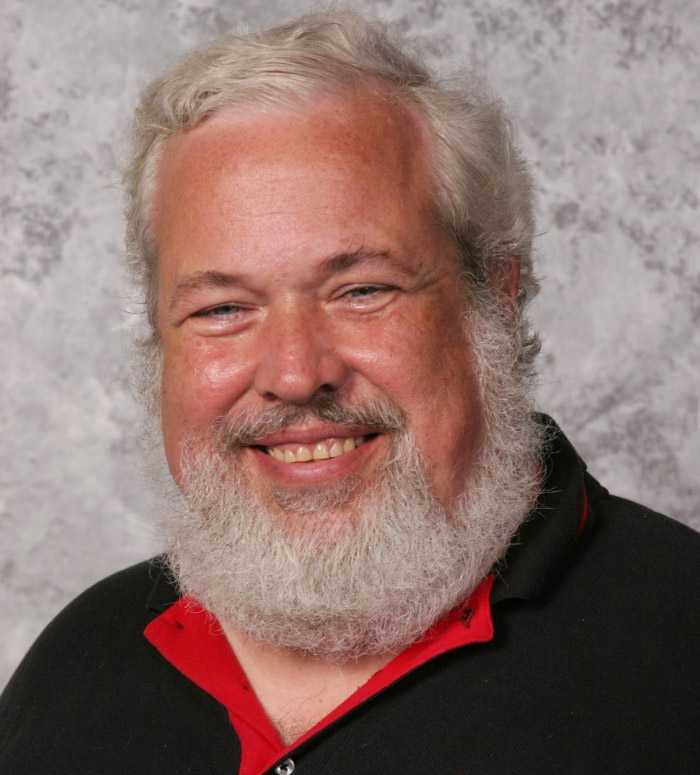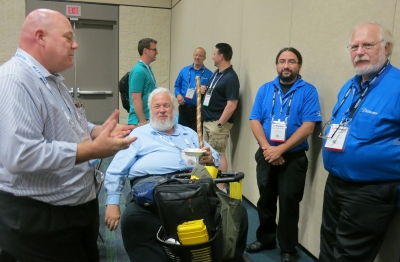
EM: Somewhere over the course of this very busy career, you found the time to write on a range of technical topics. Tell me a bit more about that.
RR: Glen Ballou, who edits the Handbook For Sound Engineers, asked me to write two chapters for the book, which got me going with writing, and then for the current edition, he asked me for three chapters. In addition, John Eargle, who had written two editions of The Microphone Book for Focal Press, passed away, and Focal wanted an updated version, so I was asked to do it. I also set up a website with additional info that didn’t make it into the book.
Another project was editing a bi-weekly e-newsletter for a worship magazine for a few years, and that content is available in the technical section of my website [soundfirst.com, which by the way, offers a treasure trove of numerous articles and white papers that Ray has written over the years].
EM: You’ve also been involved with product sales. How did that come about?

RR: Around the year 2000, I ran across the Superlux line of microphones at a trade show, asked the U.S. importer to send me some samples to test, and came away very impressed. I took the samples to some audio dealers in the Boulder, CO, area, but none was interested in taking on the line. One told me that he didn’t want to carry the line because it would impact the sale of other mics he made more money from.
However, I wanted a few of them, some of my colleagues wanted them, a radio station in town wanted a dozen, and so on. So I contacted the importer and asked if I could buy 50 mics as a one-time thing and was given the OK. When everyone had the mics they wanted, there were six left, so I put up a page on my website to sell them, and before you know it, I had a side business selling mics. Most of my customers are churches, by the way.
The same importer also handled the MiPRO line of wireless systems, so about a year later I started offering them as well. Next, management at Lectrosonics suggested I might also want to sell their wireless gear, and it’s some of the very best wireless equipment available.
EM: What aspect would you say seems to be the most overlooked or misunderstood when it comes to church design and tech?
RR: Neglecting the acoustics in the design phase of churches, and/or assuming that the acoustic needs of all churches are the same. Architects designing churches should be required to read Sound of Worship by Doug Jones, where he covers this extremely well.
The average church sound person thinks the most important part of the system is the console – after all, it’s what they touch every day. But I would suggest that after the acoustics, the most important aspect is the loudspeaker(s). In addition, the average person mixing at church usually knows the music, but they tend to bury the voices behind the instruments to the point where someone who doesn’t know the words has a hard time understanding them.
EM: What current technologies do you see as most beneficial for churches?
RR: One of them has to be the headworn microphone. It places the mic element where it needs to be and allows for much greater gain before feedback.
One pastor who was very resistant to headworn mics told me that after his first use, several members of the congregation came up to him to say how much easier it was to understand what he was saying. He added that the mic has helped to improve his preaching as well because he no longer has to pay attention to how he speaks. He can just talk naturally and yet feel confident that everyone is clearly hearing and understanding what he’s saying.
EM: The majority of church techs are volunteers with limited training. Where do you send them to get up to speed quickly and with accurate information?
RR: It’s hard to beat Curt Taipale’s “Church Sound Boot Camp” training class, as well as his advanced class, “How to Get the Sounds.” At a minimum, take the home study version of the Boot Camp.
Curt also started the Church Soundcheck (CSC) online discussion group more than 20 years ago, and I’ve participated there from almost the very beginning, helping answer questions about sound and acoustics. More recently, I’ve started doing the same with Church Sound Media Techs (CSMT) on Facebook. I’m really glad to be able to help churches worldwide from my home office.
For advanced training, nothing beats SynAudCon courses. The majority of professionals working in sound reinforcement have taken at least one class – I’ve taken 16.
EM: What’s been your approach in navigating between family, work and church?
RR: Keeping family life in balance was always a struggle. For many years we attended portachurches, and since I ran sound, it meant dragging the family to services way early and being the last to leave. Eventually, I told the people at the churches we attended that I’d help with sound and acoustic design, and also mix on occasion but not regularly. Despite the challenges, it’s all ended up working out over the years.
(Editor’s note: the Rayburn legacy of technical excellence and service to others continues in the form of Ray’s son Chris, founder/owner of Summit Integrated Systems, which specializes in audio, video, and lighting for churches, as well as his son Tim, who works with Improving Enterprises, an international IT consultancy.)
